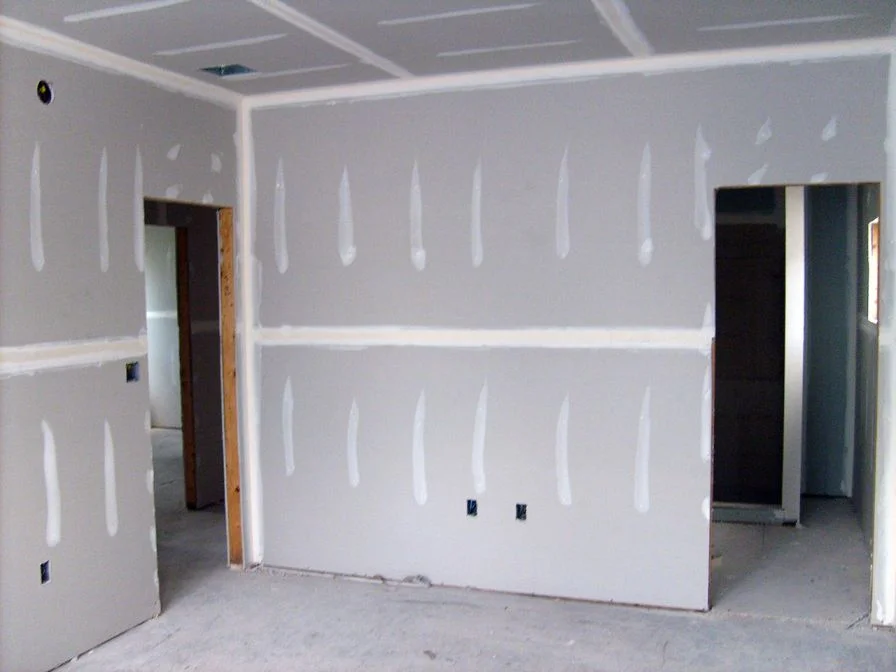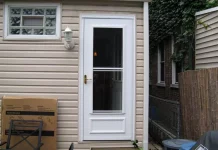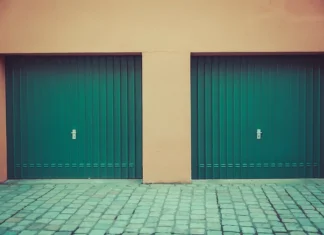When it comes to construction and home renovation, the terms ‘drywall’ and ‘sheetrock’ are often used interchangeably, but is there a difference? This article aims to explain these terms, highlighting both their similarities and differences, and guide you in choosing the right material for your project. While undertaking construction work, it is common to hear phrases like ‘We are going to sheetrock this place’ or ‘Let us drywall this room’. People who are not affiliated with construction have no idea what the workers are trying to say. But don’t worry because this article will let you know everything there is to know about sheetrock and drywall.
What is Drywall?
Drywall, also known as plasterboard or wallboard, is a common construction material used to create walls and ceilings. Made from gypsum plaster pressed between two thick sheets of paper, drywall has become a staple in modern construction due to its easy installation and cost-effectiveness. It is essentially the material that ensures structural soundness in any construction. It is what holds the walls together and widely used in construction throughout the world.
What is Sheetrock?
Sheetrock is a brand name for a specific type of drywall, manufactured by the US Gypsum Company. Since its introduction in the early 20th century, Sheetrock has become synonymous with high-quality drywall, offering a range of products with unique features like moisture resistance and fire retardation.
Difference Between Drywall and Sheetrock
Fundamentally, Sheetrock and generic drywall are the same. Both are made from gypsum and used in similar ways in construction. Confusion often arises from brand recognition of Sheetrock, the only difference is that Sheetrock® is a trademarked brand of drywall. It is manufactured by the United States Gypsum Corporation, commonly known as USG Corporation. Sheetrock often offers more specialized options and might be perceived as a higher-quality product.
Therefore, the difference between Sheetrock and drywall is that the former is trademarked, while the latter is a generic name. Only the USG Corporation is allowed to call drywall Sheetrock. Therefore, the next time someone asks is there a difference between Sheetrock and drywall; you know the answer.
1. Sheetrock vs Drywall Price
As we said earlier, sheetrock and drywall are effectively the same things, and there is no difference. Therefore, they are priced similarly. A standard sheetrock or drywall board will cost around $12-$15. You will require a lot more than a single sheet. In some areas, you will need to consider the building bylaws and other conditions. In other words, you might need to purchase fire-resistant or mold-resistant sheets, which are more expensive than the standard ones.
Irrespective of where you plan to use it, you would need to measure the area’s dimensions. Once you calculate the dimensions, it will help you know how much drywall you require. If you are confused, you can consult with people affiliated with construction or the place where you are buying the Sheetrock.
You can buy drywall at Home Depot or other similar stores. We recommend that you only buy them from reliable shops to avoid fraud. There have been instances where people opted for cheaper alternatives only to find that the drywall is no use. That’s everything there is to know about Sheetrock vs drywall price. Let’s move ahead.
2. Installation Tips and Tricks
Both drywall and Sheetrock can be installed in similar ways. Key tips include measuring the space accurately, cutting the material properly, and ensuring a smooth finish with a joint compound. Be aware of the weight of the panels and the importance of securing them correctly for framing.

3. Maintenance and Repair
Maintaining and repairing drywall and Sheetrock is relatively straightforward. Small holes or cracks can be fixed with spackling or joint compounds, while larger damage might require patching with a new piece of drywall or Sheetrock. Regular inspections for moisture and mold are also important, especially in damp areas.
You may also like to Read: Benefits of Using Drywall in your Home
Types of Drywalls
Drywalls come in different types.
- Standard
It is the cheapest drywall. You can find it easily in all sizes and thicknesses.
- Mold Resistant
It is a little bit more expensive than standard drywall. Other than this, instead of paper, it is covered with fiberglass. It helps protect against mold.
- Moisture Resistant
It is ideal for humid places. You can even use it in bathrooms and laundry places.
- Fire Resistant
It is made up of non-combustible fibers to offer protection against fire. Some areas require homes and commercial buildings to be made up of this material.
History of Drywalls
When talking about its history, we must discuss plaster walls vs drywall. Before the invention of drywall, plaster was used in construction. It was frustrating and time-consuming to use plaster. Frankly, not everyone could do it successfully. Resultantly, people started growing tired of plaster walls. In 1894, Augustine Sackett introduced the drywall, and the world has never looked back since. The drywalls were easy to fit, requiring no prior expense. Unlike plaster, they did not take time to dry, and construction work could proceed quickly. On top of everything, drywall was cheaper to manufacture and buy. So, the next time someone asks you about plaster walls vs. drywall, you will know the answer.

Drywall Thickness
We have discussed all aspects of drywall except thickness. Drywall comes in varying thicknesses.
¼ inch is ideal for basements. You can also use it in walls that do not require thick reinforcement.
¾ inch is perfect for bathrooms. Other than bathrooms, you might not need to use them elsewhere in the building.
½ inch is used everywhere in the house. It is durable, offers resistance against fire, mold, and various other things.
The standard drywall board is also ½ inch, measuring 4 feet by 8 feet wide. Many stores allow custom-built drywalls. However, you will have to pay more for them. If budget is not an issue, you can opt for custom-built instead of playing around with the standard drywalls.
You may also like to Read: How to Divide a Room with a Temporary Wall
Drywall Alternatives
If you do not want to opt for drywall in your home or building, alternatives are also available.
Wood Planks
They are the most widely used alternative to drywalls. They add to the beauty and require little to no maintenance at all. The best thing is that they are cheap, offering a cost-effective solution. If you are looking for a modern interior, wood planks are not the best option. Wood planks are ideal for a classic or country-style look.
Plastic Panels
They are easy to install and remove. Secondly, they are easy to clean and resistant to mold. The downside is that the worth-buying plastic panels are the same price as drywalls.
Veneer Plaster
It is a better alternative for drywalls. They are harder and durable. The downside is that it is challenging to find people that have the skills to apply veneer plaster.
Stone or Brick
It is an expensive option but the most durable. Depending on your style sense, you can use stone or brick walls to bring the best out of your place.
Wrap Up
Understanding the differences and similarities between drywall and Sheetrock is essential for making informed decisions in construction and renovation projects. While they are essentially the same material, brand recognition and specialized product options set Sheetrock apart. Ultimately, the choice depends on your project’s specific requirements, budget, and the desired quality of the finished product.
Remember, whether you choose Sheetrock or generic drywall, proper installation and maintenance are key to ensuring the longevity and effectiveness of these materials in your construction projects.
FAQs
Is Sheetrock better than regular drywall?
Sheetrock is often considered a high-quality brand of drywall, known for its consistency and range of specialized products, such as moisture-resistant or fire-retardant panels. However, whether it is “better” depends on your specific needs. Regular drywall is suitable for most standard applications and is more cost-effective.
Is Drywall and Sheetrock the Same Thing?
Essentially, yes. Drywall is a generic term used for panels made of gypsum plaster pressed between two sheets of paper, which are used in building construction for walls and ceilings. Sheetrock, on the other hand, is a specific brand of drywall produced by the US Gypsum Company. This means that while all Sheetrock is drywall, not all drywall is Sheetrock. The main difference lies in branding: “Sheetrock” refers to the products made by a particular company, while “drywall” is the general term for the material, regardless of the manufacturer.
Can I use Sheetrock in bathrooms or damp areas?
Yes, Sheetrock offers specific types of drywall that are designed for use in damp areas, like bathrooms. Their moisture-resistant products, often referred to as “green board,” are ideal for such environments to prevent mold and water damage.
Are drywall and Sheetrock installed the same way?
Yes, the installation process for both drywall and Sheetrock is essentially the same. It involves measuring and cutting the panels to fit, securing them to wall studs or ceiling joists, and then finishing the seams and joints with joint compound.
How do I choose between drywall and Sheetrock for my project?
The choice depends on your project requirements, budget, and preferences. If you need specialized features like moisture resistance or fire retardation, Sheetrock’s specific products may be more suitable. For standard applications, regular drywall is often sufficient and more cost-effective.












